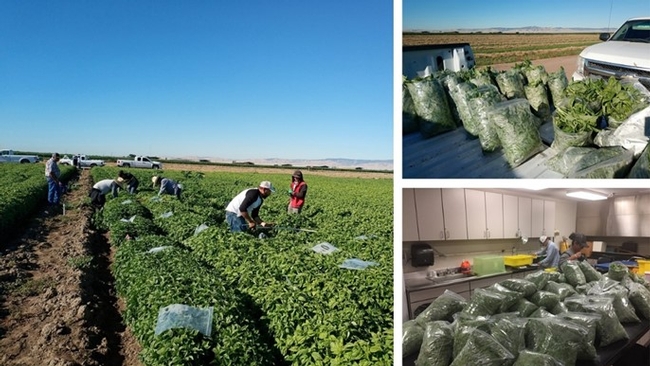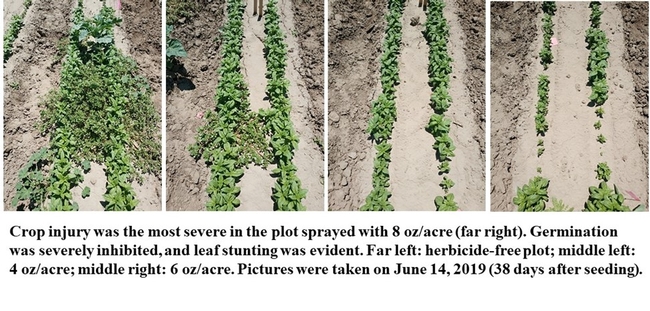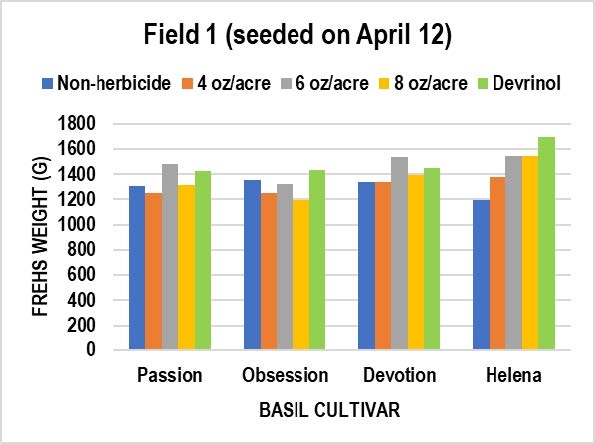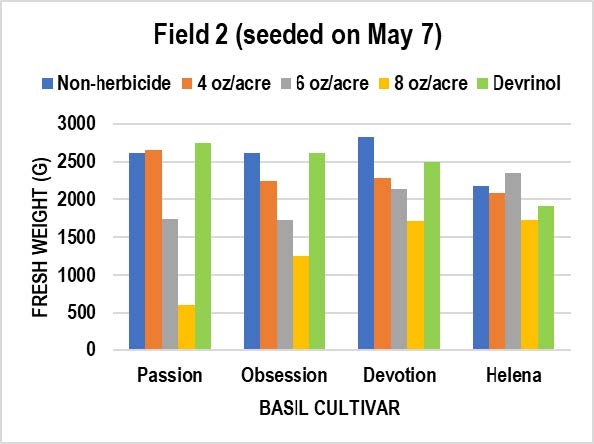The purpose of this research is to collect performance data to support registration of sulfentrazone herbicides on basil. Leafy green and culinary herb growers are affected by a limited number of herbicides, resulting in tremendous manual weed removal. Therefore, screening existing preemergent herbicides and collecting their performance on weed control will help with their registration to provide California leafy green and herb growers more choices for chemical weed suppression and save labor cost for manual weeding.
This research is sponsored by the Western IR-4 and collaborated with Ratto Bros, Inc. in Modesto, CA. Two separate fields were seeded with four basil cultivars (‘Passion,' ‘Obsession,' ‘Devotion,' and ‘Helena') on April 12 and May 7, respectively. Zeus XC (active ingredient: sulfentrazone) was soil-applied the next day after seeding at rates of 4, 6, and 8 oz./acre, respectively. The herbicide, Devrinol, was applied at 2.5 lb./acre as the grower's standard practice.

Starting on day 7 (1 week after seeding), an area of 4 sq. ft. (2 ft. x 2 ft.) was framed and pictured from each treatment with-in a replication on a weekly basis until day 70 (10 weeks after seeding) and day 63 (9 weeks after seeding) for fields seeded on April 12 and May 7, respectively. Crop injury and weed control were evaluated every two weeks, and fresh weight was measured on June 28 and July 12. Data analysis is underway. The following photos and graphs demonstrate the development of trials and preliminary treatment effect on crop injury and fresh weight. In Field 2 (seeded on May 7), crop injury and fresh biomass reduction are the most severe for plots sprayed at 8 oz. per acre for all cultivars; whereas this treatment effect was not detected in Field 1 (seeded on April 12). Statistical analysis is being conducted and will provide treatment comparisons later.
Zheng Wang is the UC Cooperative Extension Vegetable Advisor in Stanislaus County. You can contact him at zzwwang@ucanr.edu or (209) 525-6822.


